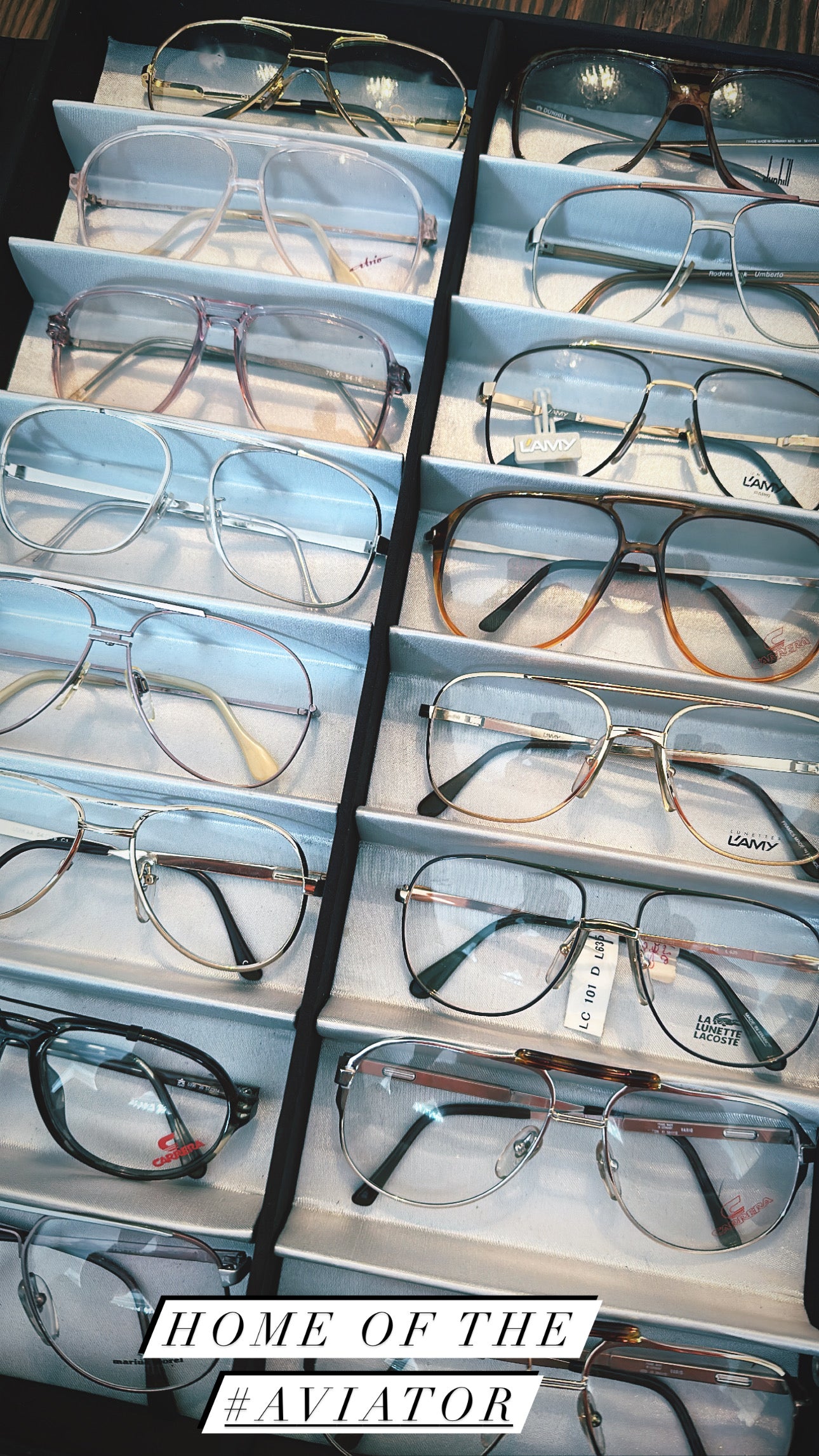Material, is the matter from which a thing is or can be made.
As you read through our product descriptions, you will come across many different materials and there will be some that you don't see be it for safety or ethical reasons.
Acetate
Acetate is strong, versatile and our most common material. First produced in 1914 and in common production by the 1930's. Early acetate was brittle and did not hold colours as well, but on the upside it was gentler on the skin and lasted far better in the long term. From the 1950's extrusion processes were used to add more colour to the frames.

Nina Ricci 1316 Vintage Designer Glasses
Epoxy Resin / Optyl
This is a thermosetting (sets permanently when heated) plastic material that does not need a plasticiser. The frames are lightweight, hypoallergenic, durable and retain colour very well. Optyl was created in 1968 by Wilhelm Anger, the material revolutionised the way frames are made to this day. This high quality material has been seen across many of the big brands including, Carrera, Dunhill, Christian Dior, Paloma Picasso and many more. It is not used much in current frame production due to the cost implications of the high quality material.
Perspex / Lucite
This material is not now used in the manufacturing of spectacles, but was commonly used in the 50's and 60's, particularly prominent in the cat eye styles. A tricky material to glaze, to which we have lot's of experience, and limited in terms of frame adjustments. We strongly recommend that any Perspex frames are glazed by our in house technician, who has many years of experience glazing the frames, and the knowledge to do so successfully.
Green Envy 50s Vintage Glasses
Rolled Gold
Created in the 19th Century, rolled gold is the made by the fusing of a base metal, usually copper, brass or silver, between fine sheets of gold. The metals are then bonded using heat and rolled into thin sheets to create the material. Rolled gold is generally a hypoallergenic material and does not cause issues for those with metal allergies. Approximately 5% to 10% of the spectacles are real gold when made of Rolled Gold.
Gold Plated
Gold plated spectacles have a thin layer of gold applied to the top of a base layer (usually copper or silver) by electrochemical or chemical plating. The layer of gold is much thinner than that used on Rolled Gold frames. Brands such as Gérald Genta, Fred, Cartier and Tiffany glasses and sunglasses we're known for using gold plate.

Tiffany Lunettes 129 Mens Designer Glasses
Tortoiseshell
This natural material was used up until 1973 when thankfully Cites - the Convention on International Trade in Endangered Species banned the material from being used. We do have some antique tortoiseshell frames, but they are not available for purchase, and remain part of our private collection, for preservation. What has lasted is the pattern itself, which we now refer to as brown mottle. This has remained a timeless classic, and can be seen across, vintage, current and designer glasses to this day.
Metal
Titanium, is a lightweight, hypoallergenic metal. Stainless steel is similar to titanium but not as lightweight or flexible. Composition metals, make up any other frames that are not specifically labelled. They consist of 2 or more metals and often contain nickel which can cause irritation for anyone who suffers with metal allergies.



